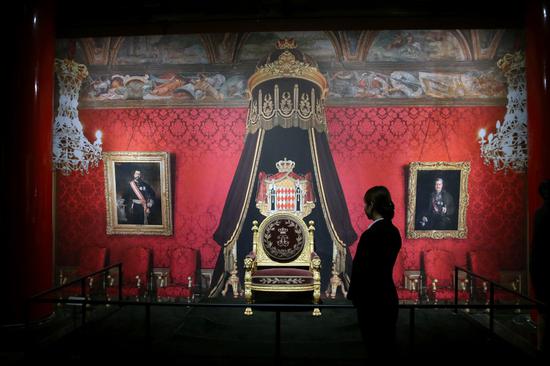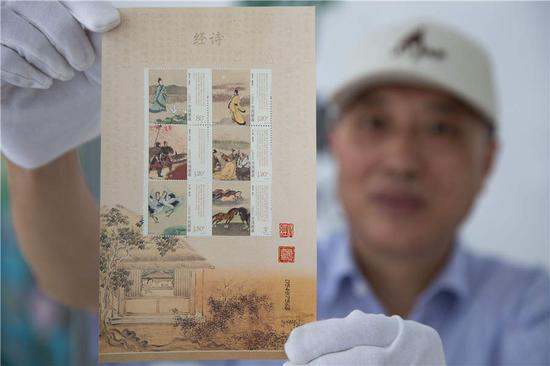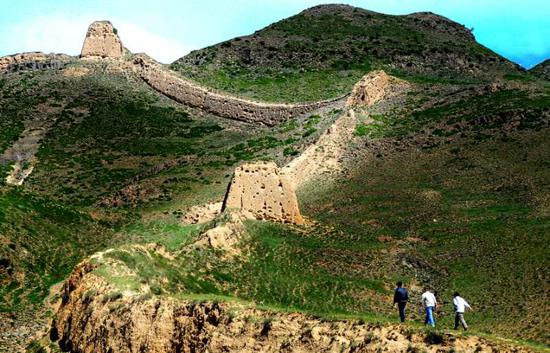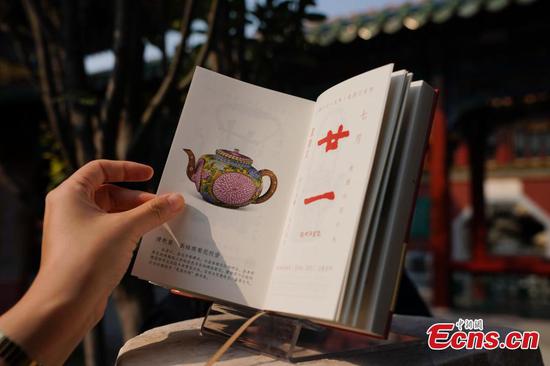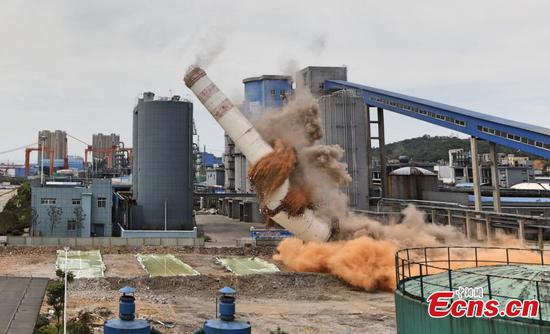
A fire drill in the Palace Museum in Beijing, Oct. 10, 2016. (File photo/China News Service)
A piece of sad news spread across the world recently. On the evening of September 2, the National Museum of Brazil was engulfed in a huge fire and burned to the ground.
The building, founded 200 years ago, was once home to the Portuguese royal family and Brazilian imperial family. After being converted to a musuem in 1892, it became one of the largest museums in the Americas and housed more than 20 million valuable items.
The cause of the fire still remains unknown, but the lack of a sprinkler system in the building was blamed. According to the Associated Press which quoted Roberto Robadey, a spokesman for the Rio fire department, the hydrants near the building did not work and firefighters had to fetch water from a nearby lake.
Beijing's Palace Museum, also once the residence of imperial families, has caught on fire many times in the past 600 years.
The largest preserved wooden structure in the world miraculously preserves to today. The result, to some extent, can be attributed to the effective fireproof methods invented in ancient times that continues to protect the buildings.
1. Install lightning conductors
The Forbidden City was completed in 1420 during the Ming Dynasty (1368-1644). Just in the second year after its completion, the Palace was hit by thunder and three main buildings, including the Hall of Offering to Heaven, renamed the Hall of Supreme Harmony in 1695, burned to ashes.
Following this, the palace caught fire almost every year. It wasn't until 19 years later that the three buildings were restored.
According to historical documents, 34 out of nearly 100 fire disasters in the Palace's history were caused by thunder. Noticing the problem, the Palace installed anti-lightning devices starting in the early Qing Dynasty.
On the cornices of some of the Palace's halls, you can see animal-like figures stretch out their iron tongues. Each tongue is connected by an iron wire, which runs from the roof, along the pillar, all the way down to the earth. It is a prototype of a lightning conductor.
However, as ancient people lacking scientific knowledge about lightning conductors, not all these devices worked, so the Palace was not exempt from being struck by thunder.
2. Stricter personnel management
Apart from thunder strikes, negligence, including making fire in stoves during the winter and fireworks were another cause of fires.
Although the Qing Dynasty occupied the Forbidden City longer than the Ming Dynasty, the number of fire disasters during the Qing were much lower. It seems that the rulers of Qing Dynasty took lessons about fire control from their predecessors.
A case in point is Emperor Kangxi (1661-1722) of the Qing Dynasty. He reigned for 61 years, with only one case of fire disaster. He was very cautious of fire prevention, stipulating strict rules for fire control and assigning designated eunuchs to inspect fires and candles every day.
3. 24-hour fire extinguisher
There were 308 big or small water vats placed all over the Palace, with almost all buildings having at least one vat nearby. These vats had a beautiful name – lucky vat.
A big vat can hold nearly 3,000 liters of water, just like a mini-size reservoir. Every day, eunuchs refilled the vats with fresh water to ensure it was free from odor.
Under each vat, there is a stone shelf with a hole. During the winters, eunuchs put burning coal inside the hole to heat the covered vats, so that the water in the vat did not freeze.
4. Setting up the imperial fire brigade
Only having water was not enough, there needed to be tools to spray water in the right places. Nowadays, we have water cannons to spray water, but in ancient times, how did people extinguish fires in high or far places?
"Jitong" provides the answer. The device is composed of two poles, with the bigger pole wrapping up part of the smaller one. Put one end of a "jitong" into a bucket of water, pump water up and then push the pole on the other end, the water then is sprayed out.
Named after the device, the "jitong" department, which was set up under the order of Emperor Kangxi, oversaw "jitongs" and took the responsibility of putting out fires.
The department was probably the first fire brigade recorded in China's historic documents. In 1905, the "jitong" department was renamed as fire brigades with a size of 100 to 200 people.
5. Incorporating wide streets and stone walls as barriers
During the Ming and Qing Dynasty, there were more than 20 big fires. But they all had one characteristic.
Taking the Gate of Heavenly Purity as a boundary, fires in history either burned in the inner court of the Palace or the outer court. Never did a fire spread across the gate.
The reason lies in that the Gate of Heavenly Purity faces a 30-meter-wide street, which separates the inner court from the outer court, and prevents the fire from spreading.
Two walls standing on the east and west side of the Palace of Heavenly Purity and the Palace of Earthly Tranquility also serve as barriers. The walls look very much like wooden houses, with beams, pillars, bucket arches, and cornices, but are totally made of stone.
Designed 600 years ago, the Palace makes it difficult for the movement of large fire extinguishing. And for historic buildings, it is not possible to install fire hydrants in the Palace.
Despite advanced fire extinguishing equipment, including robots, the ancient fireproofing methods, which protected the Palace so successfully in the past, are still being used today.
In spring and summer, firefighters fill some vats with water as "the first bucket of water" to cope with the emergency. In autumn the inflammable fallen leaves are cleaned in time and in winter firefighters cut holes in the frozen moat surrounding the Palace to ensure a sufficient supply of water.
Abiding by natural laws, the wisdom of ancient Chinese has lived for 600 years and continues to live on.


















